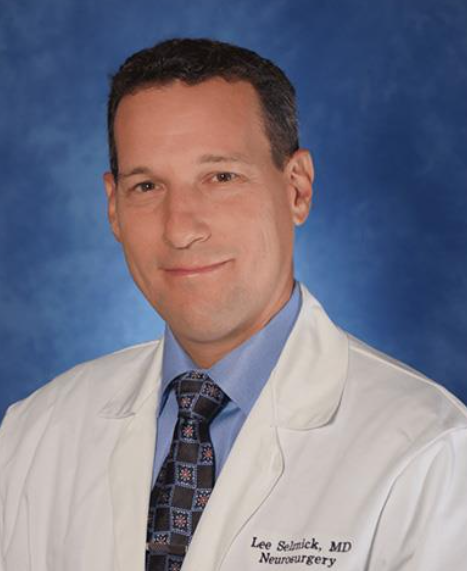Winchester Couple Credits Valley Health Neurosurgeon for Saving Man’s Life
- Category: Patient Stories, Surgical Services
- Posted On:

In the winter of 2022, Winchester resident Neil Manausa, 64, began experiencing some weakness on his left side. His leg would drag, and he had difficulty gripping items with his left hand. He also experienced erratic mood swings, forgetfulness, and became easily frustrated. 
“I started becoming very concerned,” says Dawn Manausa, Neil’s wife. “But Neil was insistent that he did not need to see a doctor.”
While driving in March of that year, Neil noticed that he was losing his peripheral vision. Fearful that he was experiencing a stroke, Dawn took her husband to the Winchester Medical Center Emergency Department. The ED doctor told the couple that Neil had a mass in his right frontal lobe.
The next morning, after an MRI, Neil and Dawn met with Valley Health neurosurgeon Lee Selznick, MD, who told them that Neil either had a highly malignant tumor called a glioblastoma or Central Nervous System Lymphoma, a rare, aggressive cancer in which tumors form in the brain, spinal cord, spinal fluid and/or eye. Only about 1,500 cases of the cancer occur each year in the U.S.
Although both outcomes would need immediate life-saving treatment, Central Nervous System Lymphoma was the more treatable option. The next step was a biopsy to identify the condition.
Diagnosis and Treatment
Dr. Selznick called the couple immediately after receiving the results. It was Central Nervous System Lymphoma, evidenced by two tumors that resembled puffs of smoke or clouds in the brain.
“We probably see one to two patients a year that we diagnose with CNS lymphoma,” Dr. Selznick says. “It’s a pretty rare condition to have, but it does present with classic findings on the brain MRI and in specific demographics, most commonly men in their 60s like Mr. Manausa. The symptoms tend to come on slowly as the tumor grows and it is very common for people to overlook or shrug them off initially. You need an evaluation in a timely fashion.”
After the diagnosis and extensive research, the couple traveled to Memorial Sloan Kettering Cancer Center in New York City for Neil’s first of eight chemotherapy treatments. After three months of exhausting travel, they transferred his treatment to Sidney Kimmel Comprehensive Cancer Center at Johns Hopkins. He reached remission in July 2022, but his cancer journey was not yet over. The couple returned to Johns Hopkins for six weeks that fall so Neil could undergo a stem cell transplant. His doctors knew this would give him his best chance at long term remission. He was back home in time for Thanksgiving.
The Strength of Hometown Health Care
Valley Health Virginia Brain & Spine’s six neurosurgeons have trained at some of the best academic centers in the country and provide a broad range of comprehensive services for brain and spine care.
“It just blows me away at the rarity of [CNS Lymphoma], that a doctor at a small community hospital like Valley Health could recognize what it was,” Dawn says. “I’ve read a lot about it, and I can’t tell you how often it’s misdiagnosed.”
Dr. Selznick emphasized how important it is for neurosurgeons to maintain their expertise in order to make the correct diagnosis without delay. “The wrong diagnosis could have led to an unnecessary surgery with significantly more risk.” Valley Health has attracted and retained highly trained specialists in many areas, including neurosurgery, according to Dr. Selznick. “There are few things in neurosurgery that we cannot do as well or better as the academic centers, and we only treat conditions that we excel at. We are also the best resource for getting a patient to the right doctor even when that happens not to be one of us.”
Today, Neil is still in remission. He has some mild fatigue, but he stays active by beekeeping, gardening, and working around his hobby farm that they share with Dawn's brother. He also takes ballroom dance classes and recently joined Valley Health Wellness and Fitness to help regain his strength.
A year after his diagnosis, Dawn and Neil met with Dr. Selznick again and thanked him for saving Neil’s life. “Anywhere else, with another doctor, they might not have recognized what we were dealing with,” Dawn says. “Dr. Selznick did not sugarcoat things. He told Neil to seek treatment right away. I believe he saved his life.”


